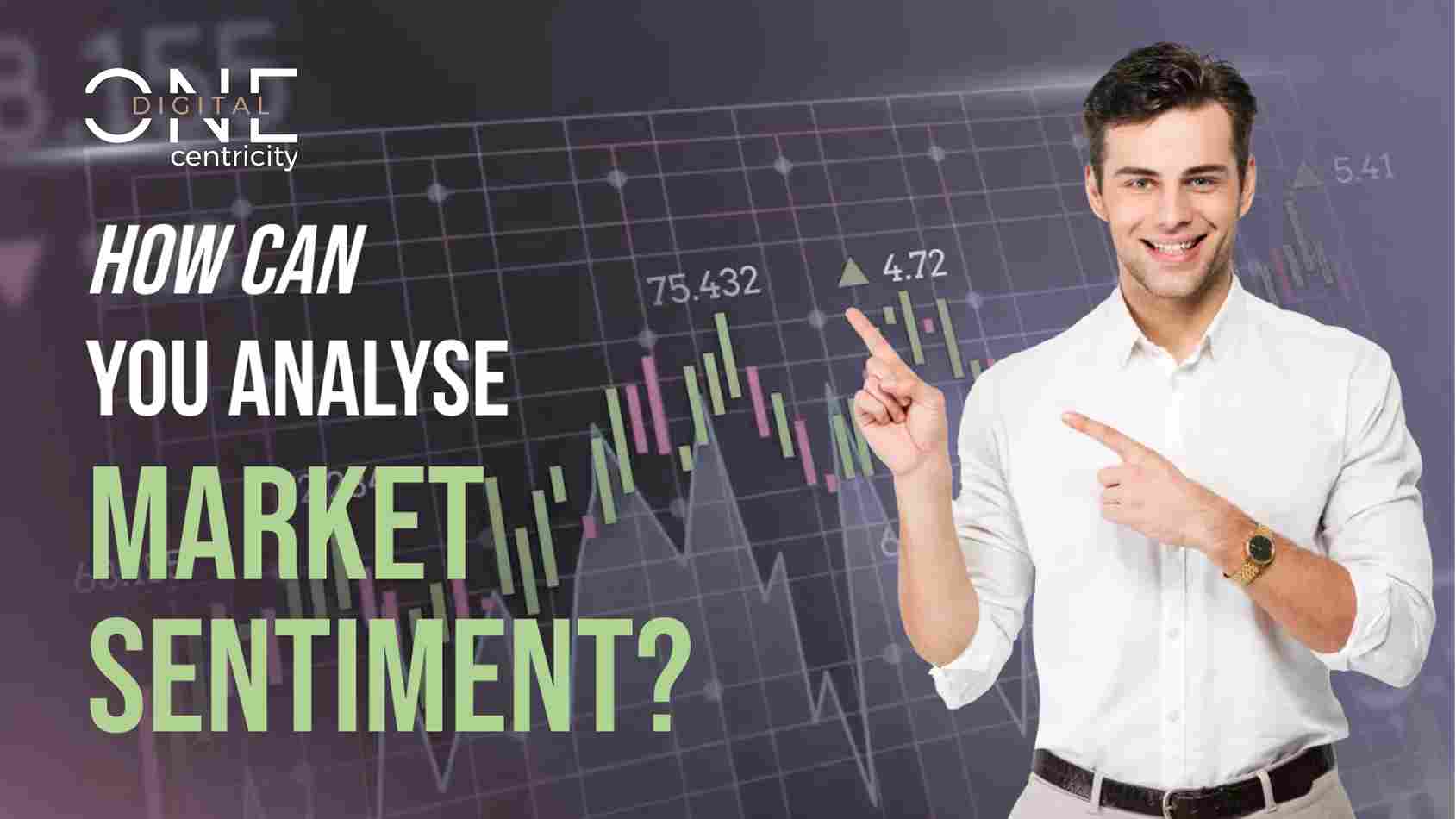How Can You Analyse Market Sentiment?
10th July 2024 | Author : Centricity

Do you know what market sentiment is?
If not, you should learn as it can help you make decisions about when to enter and exit the market. It can also help you identify potential opportunities.
Market sentiment, also known as investor sentiment, reflects the overall attitude of investors toward a particular security or the financial market as a whole. It is a crucial aspect that drives the movements in the stock market. It helps in understanding market sentiment and can provide valuable insights for investors, enabling them to make informed decisions.
Understanding Market Sentiment
Market sentiment encompasses investors' feelings and attitudes about the market's future price movements. It is often influenced by various factors such as economic data, political events, market trends, and global occurrences. Sentiment can be bullish (optimistic), bearish (pessimistic), or neutral.

In the Indian market, sentiment is significantly influenced by factors such as:
- Economic Indicators:
GDP growth, inflation, interest rates, and employment statistics.
- Political Stability:
Government policies, election outcomes, and regulatory changes.
- Global Events:
International trade policies, geopolitical tensions, and global economic trends.
- Corporate Performance:
Earnings reports, mergers and acquisitions, and other company-specific news.
Methods to Analyse Market Sentiment
1. News and Media Analysis
In India, media plays a pivotal role in shaping market sentiment. News channels, financial newspapers, and online portals regularly update economic conditions, political developments, and corporate news.
Tools like Google News and news aggregator websites help investors stay updated on relevant information. Additionally, social media platforms like Twitter and LinkedIn can provide real-time sentiment analysis through trending topics and discussions among market participants.
2. Sentiment Indicators
Several sentiment indicators can be used to gauge the market mood. Some of the popular ones in the Indian context include:
- Nifty Put/Call Ratio (PCR): This ratio measures the trading volume of put options relative to call options. A high PCR denotes a negative sentiment, and a low PCR reflects a positive sentiment.
- Market Breadth Indicators: These indicators, such as the Advance/Decline ratio, show the number of advancing stocks relative to declining ones. Positive breadth indicates bullish sentiment and vice versa.
- Volatility Index (VIX): The India VIX measures market volatility. A high VIX indicates fear or uncertainty, while a low VIX suggests complacency or confidence among investors.
3. Technical Analysis
Technical analysis is monitoring price charts and trading volumes to forecast future market movements. In India, commonly used technical analysis tools include:
- Simple Moving Averages (SMA) and Exponential Moving Averages (EMA) can identify trends and reversal points.
- The Relative Strength Index (RSI) identifies overbought or oversold conditions based on the speed and change of price movements.
- Bollinger Bands can identify volatility and potential price breakouts.
4. Surveys and Polls
Investor sentiment surveys and polls conducted by financial institutions and media houses provide insights into the collective mindset of market participants. In India, surveys by organizations like SEBI (Securities and Exchange Board of India) and various brokerage firms are valuable resources.
5. Fund Flow Data
Monitoring fund flow data, such as Foreign Institutional Investors (FIIs) and Domestic Institutional Investors (DIIs) activity, helps gauge market sentiment. Significant inflows or outflows can indicate strong bullish or bearish sentiment, respectively.
Bottom Line:
Analyzing market sentiment is a vital aspect of investing in the Indian stock market. By understanding the overall mood of investors, one can make better-informed decisions and potentially enhance investment returns. Utilizing news and media analysis, sentiment indicators, technical analysis, surveys, and fund flow data are effective methods to gauge market sentiment. Staying informed and adapting to market conditions can help investors navigate the complexities of the market and achieve their financial goals.
Disclaimer : The above information should not be relied upon for personal or financial decisions, and you should consult an appropriate financial professional for specific advice. The information presented under our newsletter and blogs is solely for informational purpose.

Thematic Funds in India: A Growing Trend in Investment!
30th January 2025

Are you investing in SIPs smartly ?
21st January 2025

Multi-Asset Funds in India: Diversification Made Easy for Investors
16th December 2024

Multi-Cap vs Flexi-Cap Mutual Funds: Where to Invest in 2024?
26th September 2024


